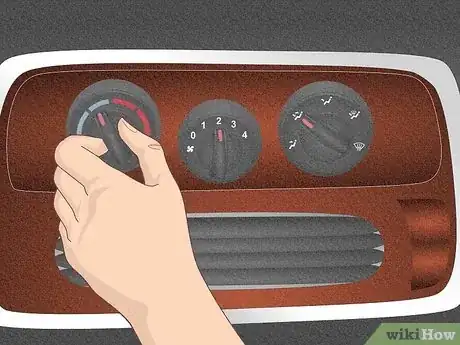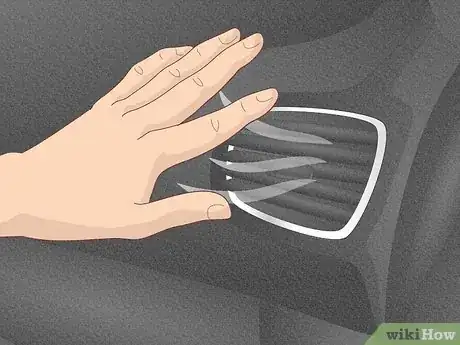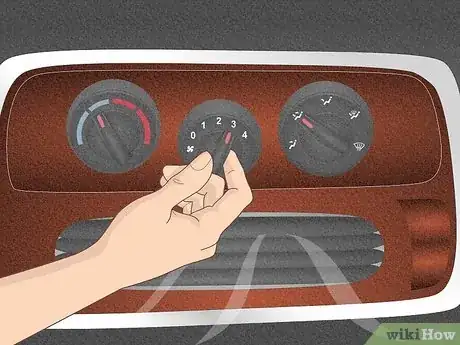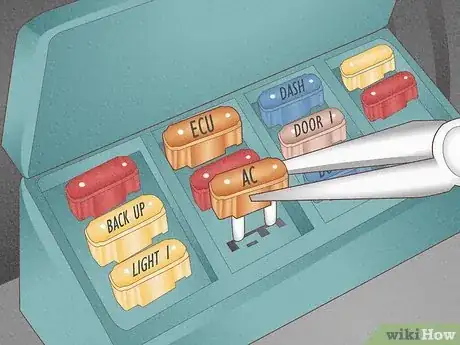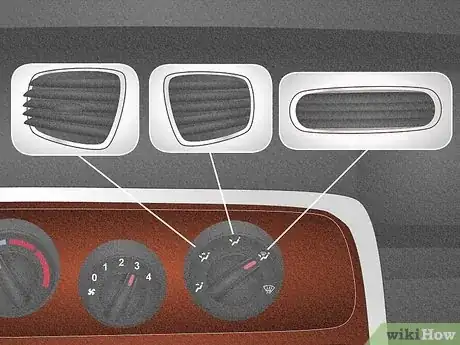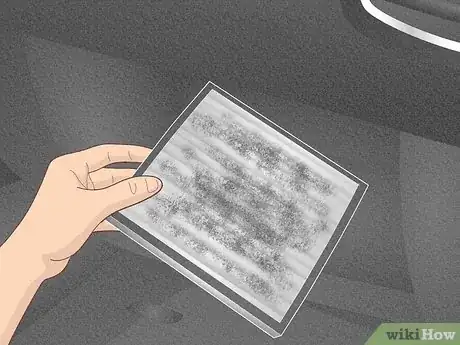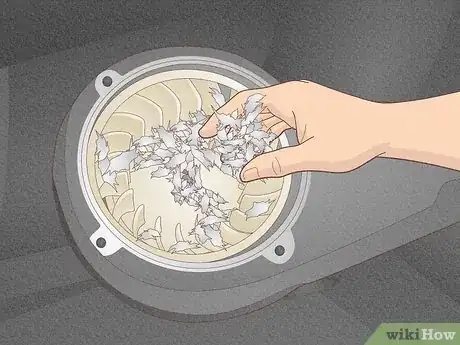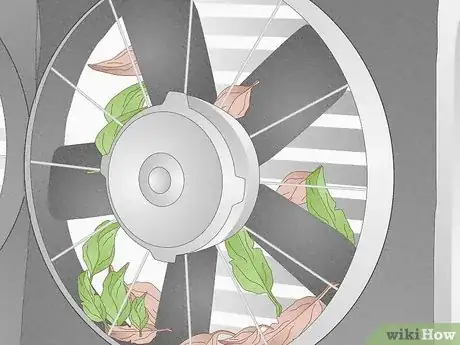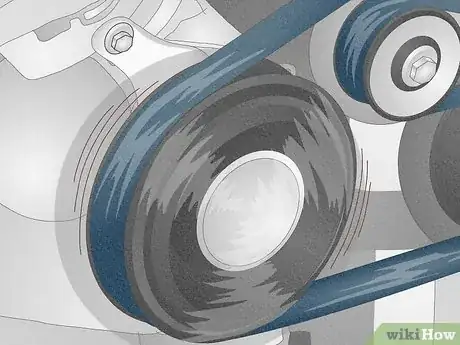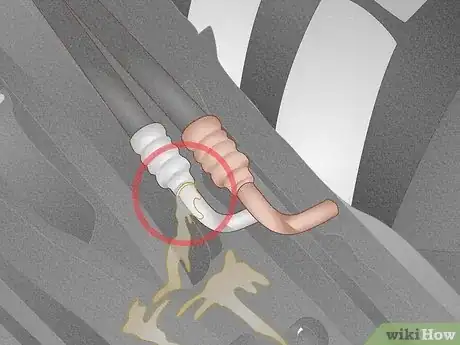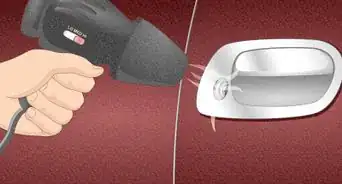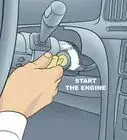This article was co-authored by Tom Eisenberg. Tom Eisenberg is the Owner and General Manager of West Coast Tires & Service in Los Angeles, California, a family-owned AAA-approved and certified auto shop. Tom has over 10 years of experience in the auto industry. Modern Tire Dealer Magazine voted his shop one of the Best 10 Operations in the Country.
There are 9 references cited in this article, which can be found at the bottom of the page.
wikiHow marks an article as reader-approved once it receives enough positive feedback. This article has 24 testimonials from our readers, earning it our reader-approved status.
This article has been viewed 1,594,571 times.
Driving around on a hot day in a car without a working air conditioner can be uncomfortable and even dangerous in extreme heat. Diagnosing the reason that your air conditioning isn’t working will help you determine whether the problem is one that you can fix yourself or if you need to take it to a repair shop. You are also less likely to be taken advantage of at a repair shop if you already know why your AC is not working.
Steps
Collecting Initial Information
-
1Turn the air conditioning on while the car is running. The air conditioner won’t run properly unless your engine is running. The best setting for diagnosis is “fresh air” (not recirculated) with the air blowing out of the center vents in the dash and the AC turned on.
- Start with the fan speed turned to its highest setting.
- If your car has a “Max AC” setting, select that option.
-
2Listen for unusual noises coming from the AC. Noise could indicate that there is a problem with your compressor and that it needs repair or replacing.[1]Advertisement
-
3Feel the air coming out of the vents. You will need to know if the air is cold, room temperature, or hotter than the air around it. Also note if it starts cold but turns warmer, or if it is usually warm but blows cold intermittently.
-
4Notice the air pressure. Turn the air pressure to the high and low settings and see if the airflow changes like it normally does.
-
5Smell the air coming from the vents. If there are unusual smells, you could have a leak. You may also need to change your cabin air filter.[2]
-
6Inspect your car’s fuses. Check your owner’s manual for the location of your car’s fuse panel, as it may be under the hood, in the trunk, or even in the driver’s foot well area. A blown fuse can cause your AC to stop working.[5]
Diagnosing Airflow Problems
-
1Check all of the vents. Be sure that air pressure is coming out of the vents that you have selected. Move the vent selector to see if the air moves to the proper vents.[6]
- If changing the selected vent does not alter the flow of air, you likely have a blend door problem, which will require replacing the doors inside the dash that determine the direction of the air flow.[7] [8]
- Blend doors change position when the temperature selection is changed, blocking the flow or permitting the flow of either hot or cold air.
- Sometimes an AC system with a mode door problem could be working fine, but the air flow is being directed somewhere else, like back out to the engine, instead of into the car.
-
2Look at your cabin air filter. Especially if the air coming from your vents smells funny or if you think you have had a slow decrease in pressure for some time, check the air filter. You will be able to see if it has a buildup of dirt or debris on it.
- It is possible that your cabin air filter is so blocked that it is interfering with your air pressure, and replacing it will be a relatively easy an inexpensive fix to your problem.
- Your car manual may have instructions on replacing the cabin filter. If it doesn’t, try searching online for “replace cabin air filter” followed by the year, make, and model of your car (for example, you might search for “replace cabin air filter for 2006 Toyota Camry”).[9]
-
3Check for a blower motor problem. The easiest way to do this is to try turning on your heat. If you have weak air flow when the heat is on as well, your blower motor may have gone out.[10]
- A blower motor may have a resistor problem if your air only blows on the high setting but will not blow on a lower setting.
- Unfortunately, mice and other rodents sometimes build homes in car HVAC hoses and can get caught in the blower motor when the car is started. A loud noise (or bad smell) coming when the heat or air are running could be a sign of this problem.
Diagnosing Air Temperature Problems
-
1Find the front of your AC condenser. It is normally located in front of your radiator. If there are leaves or other dirt or buildup blocking it, remove them and clean the area.
-
2Look under the hood at the AC compressor clutch. If your air pressure is normal but the air is hot, you may have a compressor problem. Checking to see if the compressor clutch is engaging is a simple visual inspection.[11] The compressor is usually located towards the front of your engine, just inside the grill of your car.
- Your car should be running with the AC on to check the compressor clutch.
- The compressor looks like a small motor with a large wheel on the end. The wheel (which is the compressor clutch) should be spinning. If it is not spinning, you have a problem with your compressor.[12]
-
3Check the tension on the belt of the compressor. It should be tight. If it is loose, you need a new compressor belt.[13]
-
4Find any coolant system leaks. One of the most common AC temperature problems is low refrigerant. The AC system is closed, so refrigerant should not be lost unless there is a leak.[14]
- Look for oily residue on or around hoses that attach AC components together. Oily spots may indicate a refrigerant leak.
- You may consider using an electronic leak detector, which can detect much smaller quantities of refrigerant.
- There are also some testers that use dye, UV light, and protective glasses to find leaks.
- If you do find a leak, you will likely need to hire a professional to repair the leak. You will probably need new parts too, as many of the components cannot be repaired or patched.
-
5Check for freezing. If your AC blows cold initially but then stops being cold after some use, it could be freezing. Excess air and moisture in the system may lead components to freeze (literally).[15]
- Freezing can also be caused by an oversaturated receiver/drier or accumulator.
- Turning the system off for a while and letting it thaw will temporarily solve the problem.
- If the problem is persistent, you may need your system to be flushed or evacuated with a vacuum pump.
Community Q&A
-
QuestionCan a bad temp sensor cause AC not to work?
 Ed BeeryEd Beery is an Automotive Specialist and the Owner of InTechgrity Automotive Excellence based in Denver, Colorado. With more than eight years of experience, he specializes in providing maintenance and repair services for both individuals and companies. Ed and the InTechgrity Automotive Excellence Team are approved by the American Automobile Association (AAA) for repairs and are Automotive Service Excellence (ASE) certified.
Ed BeeryEd Beery is an Automotive Specialist and the Owner of InTechgrity Automotive Excellence based in Denver, Colorado. With more than eight years of experience, he specializes in providing maintenance and repair services for both individuals and companies. Ed and the InTechgrity Automotive Excellence Team are approved by the American Automobile Association (AAA) for repairs and are Automotive Service Excellence (ASE) certified.
Automotive Specialist Definitely! If the temperature sensor does not send a signal, then the AC will not turn on. Just keep in mind that these sensors are located deep in your HVAC system behind the dashboard, and can be difficult to inspect and replace.
Definitely! If the temperature sensor does not send a signal, then the AC will not turn on. Just keep in mind that these sensors are located deep in your HVAC system behind the dashboard, and can be difficult to inspect and replace. -
QuestionHow do you test a blend door?
 Ed BeeryEd Beery is an Automotive Specialist and the Owner of InTechgrity Automotive Excellence based in Denver, Colorado. With more than eight years of experience, he specializes in providing maintenance and repair services for both individuals and companies. Ed and the InTechgrity Automotive Excellence Team are approved by the American Automobile Association (AAA) for repairs and are Automotive Service Excellence (ASE) certified.
Ed BeeryEd Beery is an Automotive Specialist and the Owner of InTechgrity Automotive Excellence based in Denver, Colorado. With more than eight years of experience, he specializes in providing maintenance and repair services for both individuals and companies. Ed and the InTechgrity Automotive Excellence Team are approved by the American Automobile Association (AAA) for repairs and are Automotive Service Excellence (ASE) certified.
Automotive Specialist Start your vehicle and turn on the AC with the fan on high. Then, cycle through the selector options on your HVAC control, feeling for cold air from each position. Positions that don't blow cold air may have a temperature sensor issue, while positions that don't blow any air might have a blend door actuator problem.
Start your vehicle and turn on the AC with the fan on high. Then, cycle through the selector options on your HVAC control, feeling for cold air from each position. Positions that don't blow cold air may have a temperature sensor issue, while positions that don't blow any air might have a blend door actuator problem. -
QuestionHow do I know if my AC fan is bad?
 Ed BeeryEd Beery is an Automotive Specialist and the Owner of InTechgrity Automotive Excellence based in Denver, Colorado. With more than eight years of experience, he specializes in providing maintenance and repair services for both individuals and companies. Ed and the InTechgrity Automotive Excellence Team are approved by the American Automobile Association (AAA) for repairs and are Automotive Service Excellence (ASE) certified.
Ed BeeryEd Beery is an Automotive Specialist and the Owner of InTechgrity Automotive Excellence based in Denver, Colorado. With more than eight years of experience, he specializes in providing maintenance and repair services for both individuals and companies. Ed and the InTechgrity Automotive Excellence Team are approved by the American Automobile Association (AAA) for repairs and are Automotive Service Excellence (ASE) certified.
Automotive Specialist Your AC fan will either have inconsistent air movement or no air movement at all.
Your AC fan will either have inconsistent air movement or no air movement at all.
Warnings
- Do not add refrigerant unless you are sure that low refrigerant is the cause of the problem because overfilling the system with too much refrigerant can cause severe damage.⧼thumbs_response⧽
- It is always best to consult a professional to do repairs to your vehicle.⧼thumbs_response⧽
- Wear safety glasses and work in an open environment, where fumes won’t overwhelm you. Never touch your eyes or mouth after handling Freon or other chemicals. Wear long sleeves and gloves whenever possible.[16]⧼thumbs_response⧽
References
- ↑ Tom Eisenberg. Auto Technician. Expert Interview. 26 July 2019.
- ↑ Tom Eisenberg. Auto Technician. Expert Interview. 26 July 2019.
- ↑ Tom Eisenberg. Auto Technician. Expert Interview. 26 July 2019.
- ↑ Tom Eisenberg. Auto Technician. Expert Interview. 26 July 2019.
- ↑ Ed Beery. Automotive Specialist. Expert Interview. 19 November 2021.
- ↑ Tom Eisenberg. Auto Technician. Expert Interview. 26 July 2019.
- ↑ http://www.motor.com/article.asp?article_ID=1874
- ↑ http://www.firestonecompleteautocare.com/cf/maintenance/car-air-conditioning-repair-troubleshooting/
- ↑ Tom Eisenberg. Auto Technician. Expert Interview. 26 July 2019.
- ↑ http://www.youfixcars.com/blower-motor.html
- ↑ Ed Beery. Automotive Specialist. Expert Interview. 19 November 2021.
- ↑ https://www.youtube.com/watch?v=PMM80xlon3U
- ↑ Ed Beery. Automotive Specialist. Expert Interview. 19 November 2021.
- ↑ http://www.agcoauto.com/content/news/p2_articleid/258
- ↑ http://www.aa1car.com/library/ac98.htm
- ↑ http://www.youfixcars.com/automotive-air-conditioning-safety.html
About This Article
To diagnose why the air conditioning in your car isn't working, start by turning your car on and setting the AC to full blast. If strange noises are coming from the AC, there could be an issue with the compressor and it may need to be fixed or replaced. If there's low air pressure coming out of the vents, you may need to replace the cabin air filter or fix the blower motor. If the air coming out is warm, the coolant could be leaking or you may need to clean the AC condenser. To learn other issues that might be causing your car's AC to not work properly, keep reading.
